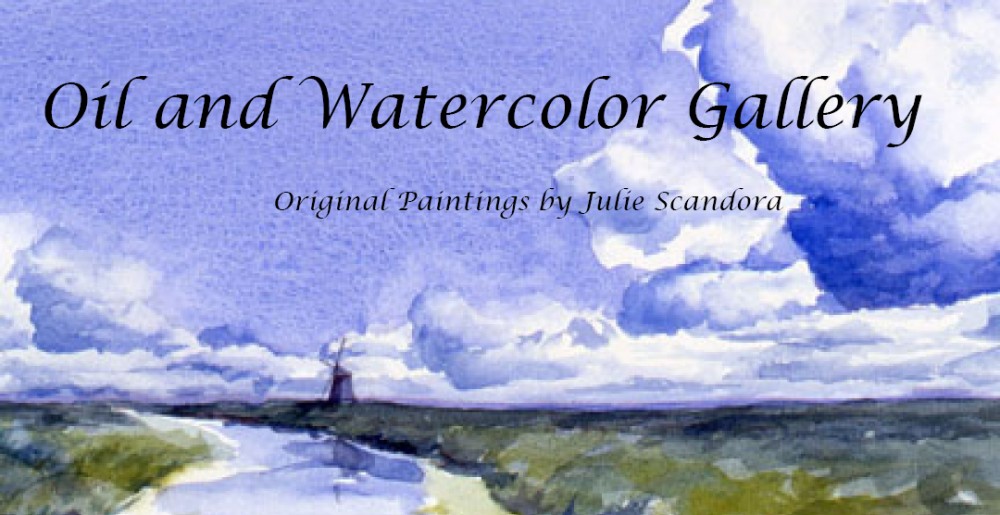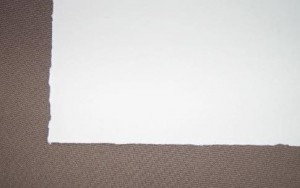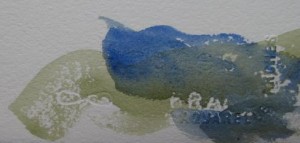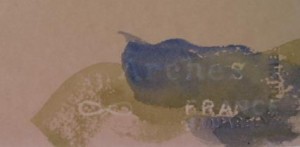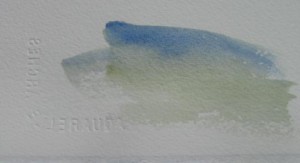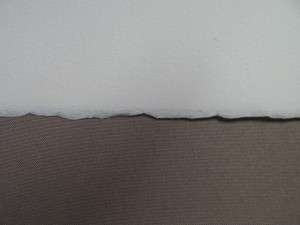 A deckle edge is the naturally uneven edge of a sheet of handmade paper. The paper is made in a frame, called a deckle, and thus the name for the rough edge. In a sheet of watercolor paper, the deckle edge of two opposite sides look like the one in the photograph on the right. The very edge has a translucence to it. If you look carefully, you can see this in part of the paper’s edge in the photograph.
A deckle edge is the naturally uneven edge of a sheet of handmade paper. The paper is made in a frame, called a deckle, and thus the name for the rough edge. In a sheet of watercolor paper, the deckle edge of two opposite sides look like the one in the photograph on the right. The very edge has a translucence to it. If you look carefully, you can see this in part of the paper’s edge in the photograph.
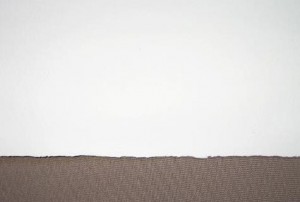 The other two sides are also uneven but are not as thin and, thus, do not have the translucency of the ones mentioned above. The photograph on the left shows one of these other two deckle edges.
The other two sides are also uneven but are not as thin and, thus, do not have the translucency of the ones mentioned above. The photograph on the left shows one of these other two deckle edges.
Compare the deckle edges above to the edges in the photograph on the right. These have been torn. They do look different from the deckle edges mentioned first. You may not see much of a difference here with the deckle edge shown in the photograph directly above on the left, but if you were to see the actual paper, you would be able to tell the natural edge from the torn edge.
Many times, you will not even see the edges of a painting. A mat often surrounds watercolor paintings (to hold them in place, to keep them from touching the glass, and to set the picture off from the frame). However, if a painting has been done on a full sheet of paper, the artist may frame it so the edges show. (I do this with my large, 22″ x 30″, watercolors.)
A mat allows the artist to cover areas that did not turn out, and this is perfectly fine. But the ability to cover a mistake in that way demonstrates the challenge in painting a watercolor that goes to the edges – no mistakes allowed!
